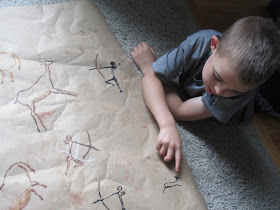I have seen this experiment all over Pinterest and while
I do my best to try and bring my followers something relatively fresh and new,
I decided that my boys should not miss out just because I blog. After all, why
deprive them of one of the coolest chemical reactions ever?
This experiment doesn't REALLY make toothpaste, after all
you wouldn't want to put it in your mouth. However, the look of the billowing
foam definitely has the appearance of its moniker.
What You Need
1/2 cup clear 30-volume liquid developer (this is
salon-grade hydrogen peroxide)
3 tbsp. water
Empty 20-oz clear plastic soda bottle (rinsed clean)
1 packet of yeast (or 1 tbsp.)
food coloring
1 tbsp. liquid dish soap
Cup
Funnel
Tray and or large plastic sheet (we used a plastic trash
bag under a jelly roll pan)
Spoon
Safety googles
What to Do
1. ADULTS ONLY - Pour the liquid developer (aka hydrogen
peroxide) into the empty bottle. Wear goggles to avoid damage from any
splatter.
2. Add 8 drops of food coloring to the bottle.
3. In the cup, combine yeast and water. Stir to
accelerate the dissolving process. Don't worry if it gets clumpy.
4. Add 1 tbsp. of dish soap to the bottle. Swirl gently to
combine. Remember: kids should be wearing their safety googles!
5. Using a funnel, pour the yeast mixture into the
bottle.
6. Watch as the yeast (your catalyst) combines with the
soapy peroxide to create a fountain of foam.
It will spill out of the bottle so make sure to conduct
this experiment in a place where messes are easily cleaned up.
My boys were amazed and even commented that the bottle
felt warm to the touch. The chemical reaction created heat! The yeast removed
oxygen from the hydrogen peroxide (developer); because of how quickly that took place, a LOT of bubbles are created.
Don't worry about the foam - it's not toxic. It's merely
water, soap, and oxygen!
After we conducted this experiment we watched Bill Nye
the Science Guy teach us about chemical reactions. All his DVDs are impressive,
but this one was over the top!
The credit for this
experiment goes entirely to Science Bob. Stop by to
watch his video!










































